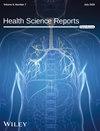Comparing Cesarean Incisional Complications in Women With and Without Enoxaparin: A Quasi-Experimental Study
Abstract
Background and Aims
Although some women who undergo cesarean section need to receive prophylactic Enoxaparin due to the increased risk of thromboembolism during their puerperium period, the question is always raised of whether this drug with the mechanism of increased bleeding may increase surgical wound complications. Hence, the present study was conducted with the aim of a comparative study on complications of abdominal incision in cesarean section patients with and without receiving Enoxaparin.
Methods
A quasi-experimental study was conducted on 789 cesarean section participants (317 receiving Enoxaparin and 472 control subjects), 20–40 years pregnant women in Imam Reza and Ummal-Banin hospitals in Mashhad, Iran. All participants who scored three or more for thromboembolism risk based on the National Protocol received Enoxaparin after surgery. Those with underlying wound complication risk factors were excluded from the study. Then, both groups were evaluated for abdominal incision complications up to 2 weeks after their delivery and were compared with each other. A p value < 0.05 was considered significant.
Results
In total, 5% of patients in the Enoxaparin group and 5.5% in the control group had ulcer complications (p = 0.7). The frequency of the type of complication between the two groups was as follows: hematoma (p = 0.8), ecchymosis (p = 0.5), wound infection (p = 0.9), wound partial dehiscence (p = 0.09), wound total dehiscence (p = 0.3), secondary closure of the incision (p = 0.7) which had no meaningful statistical difference.
Conclusion
Based on the outcomes obtained in the present study, prescribing Enoxaparin after a cesarean in cases receiving this drug for thromboembolic prophylaxis did not significantly increase the complications of abdominal incision, and there was no need for more incision care.


 求助内容:
求助内容: 应助结果提醒方式:
应助结果提醒方式:


